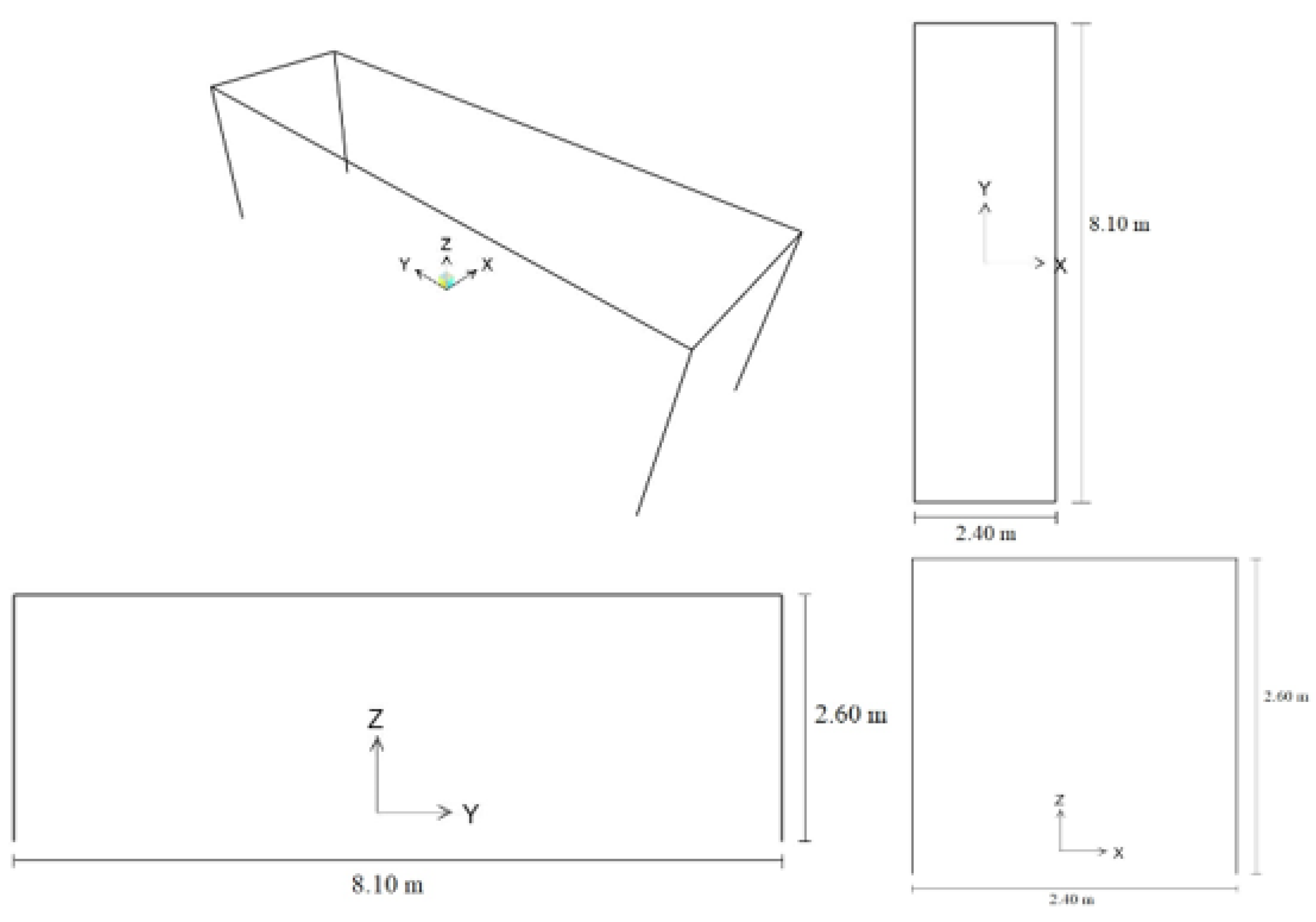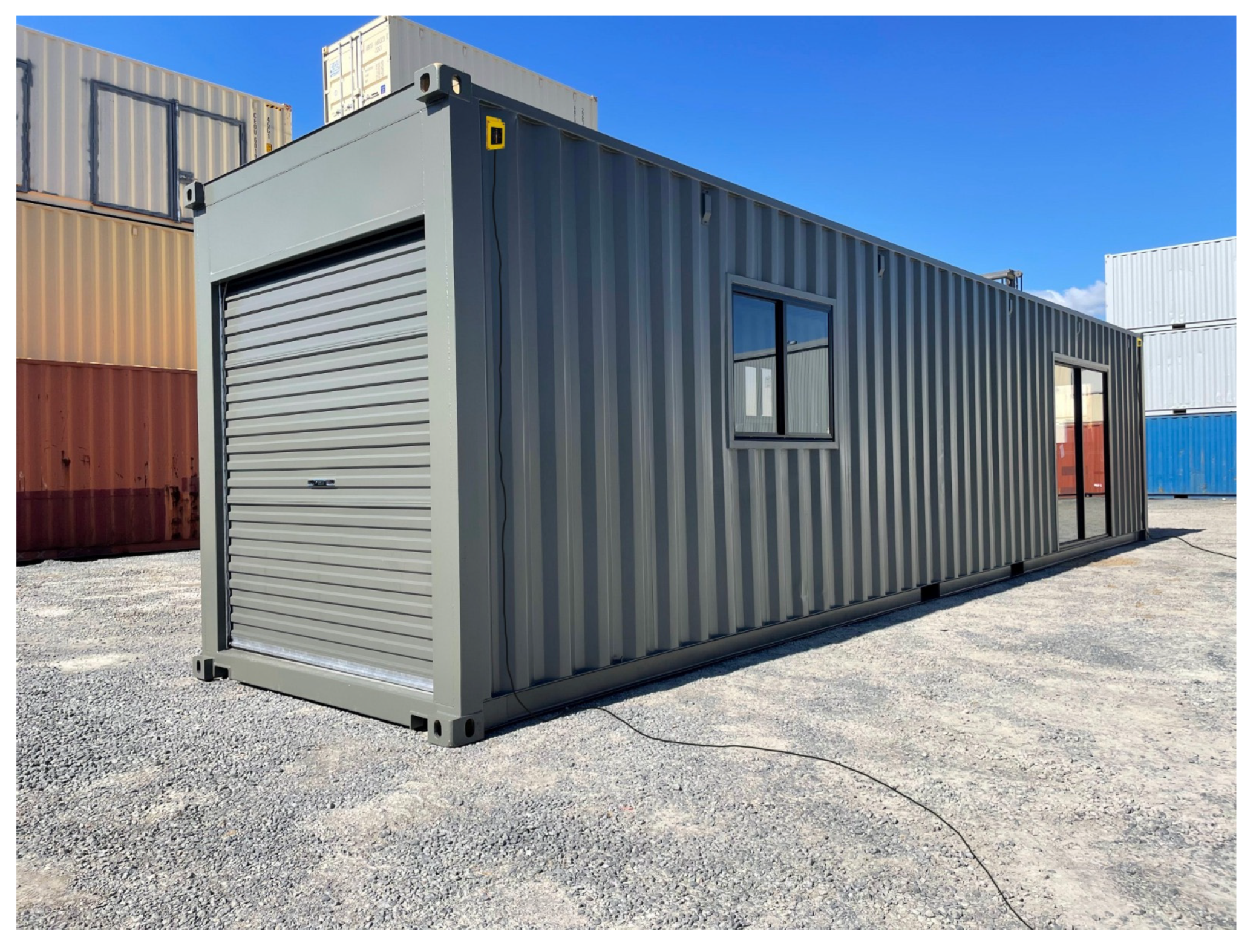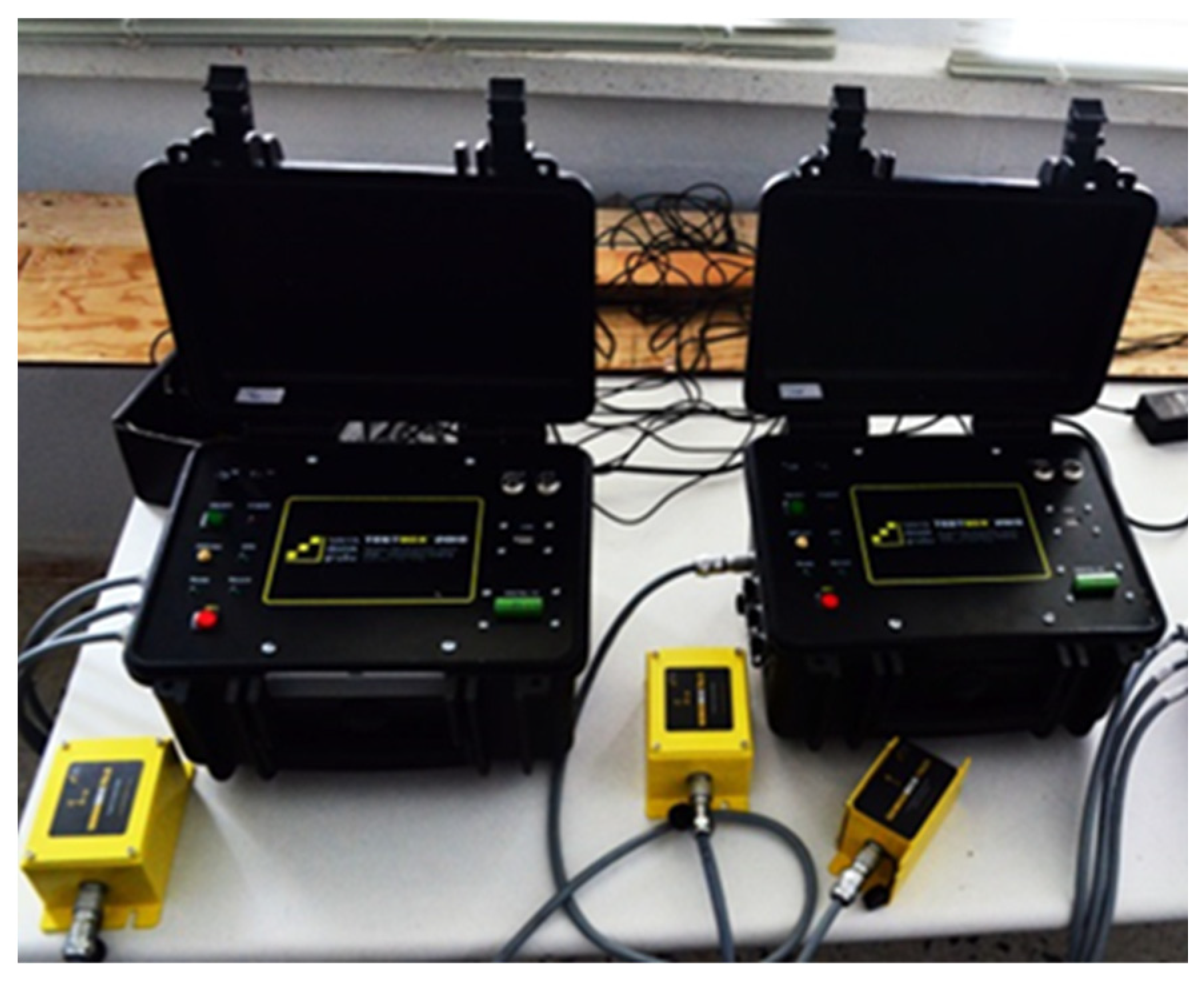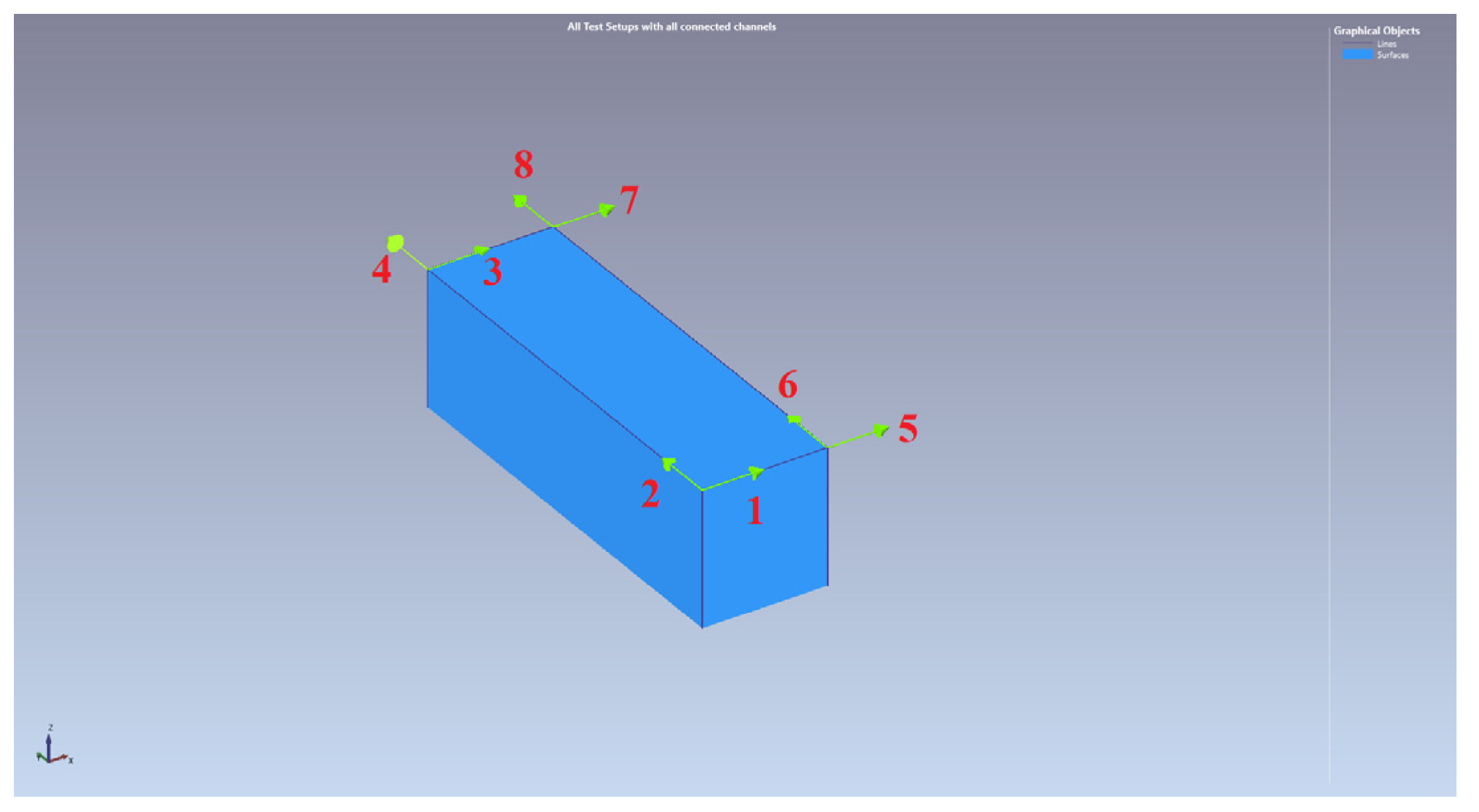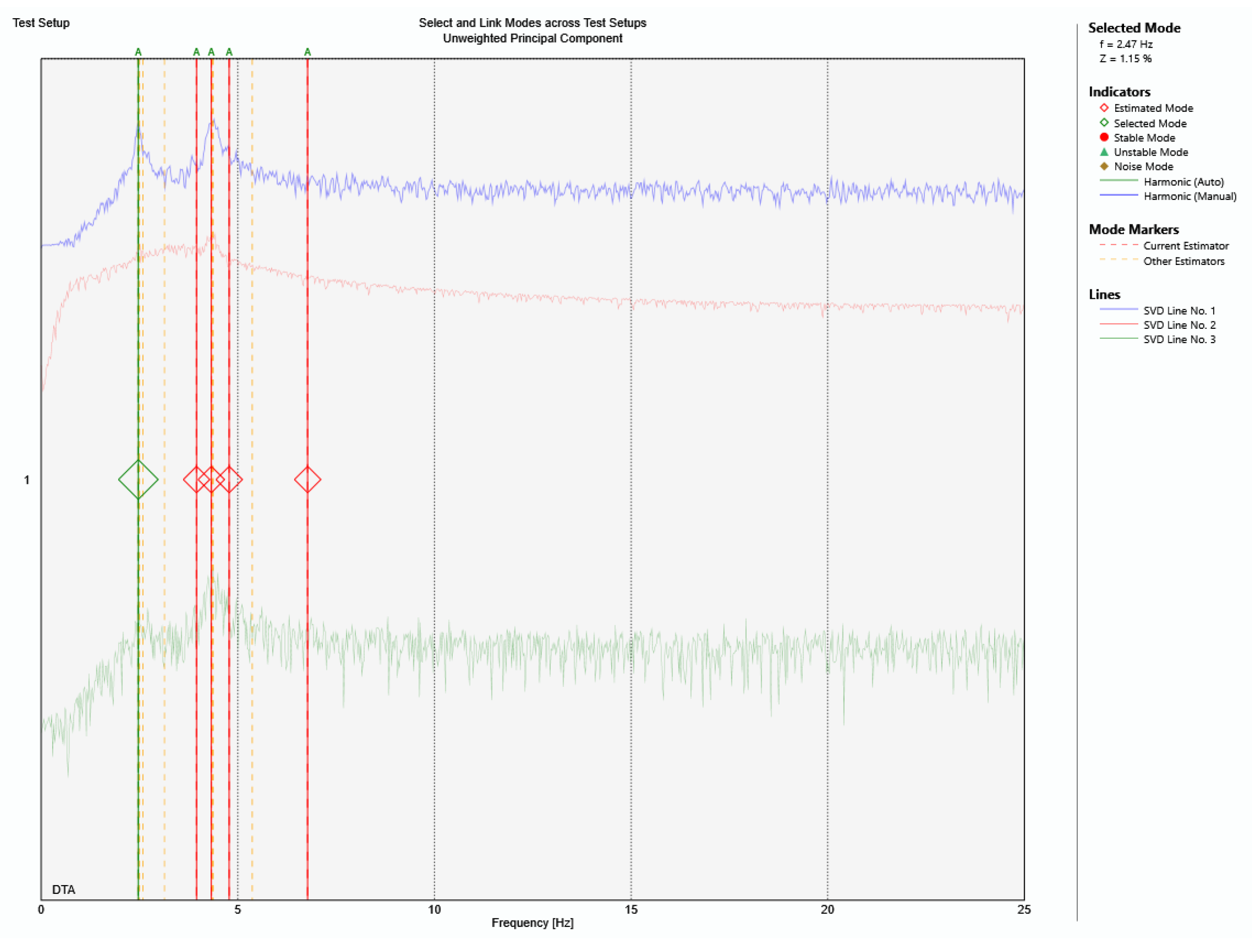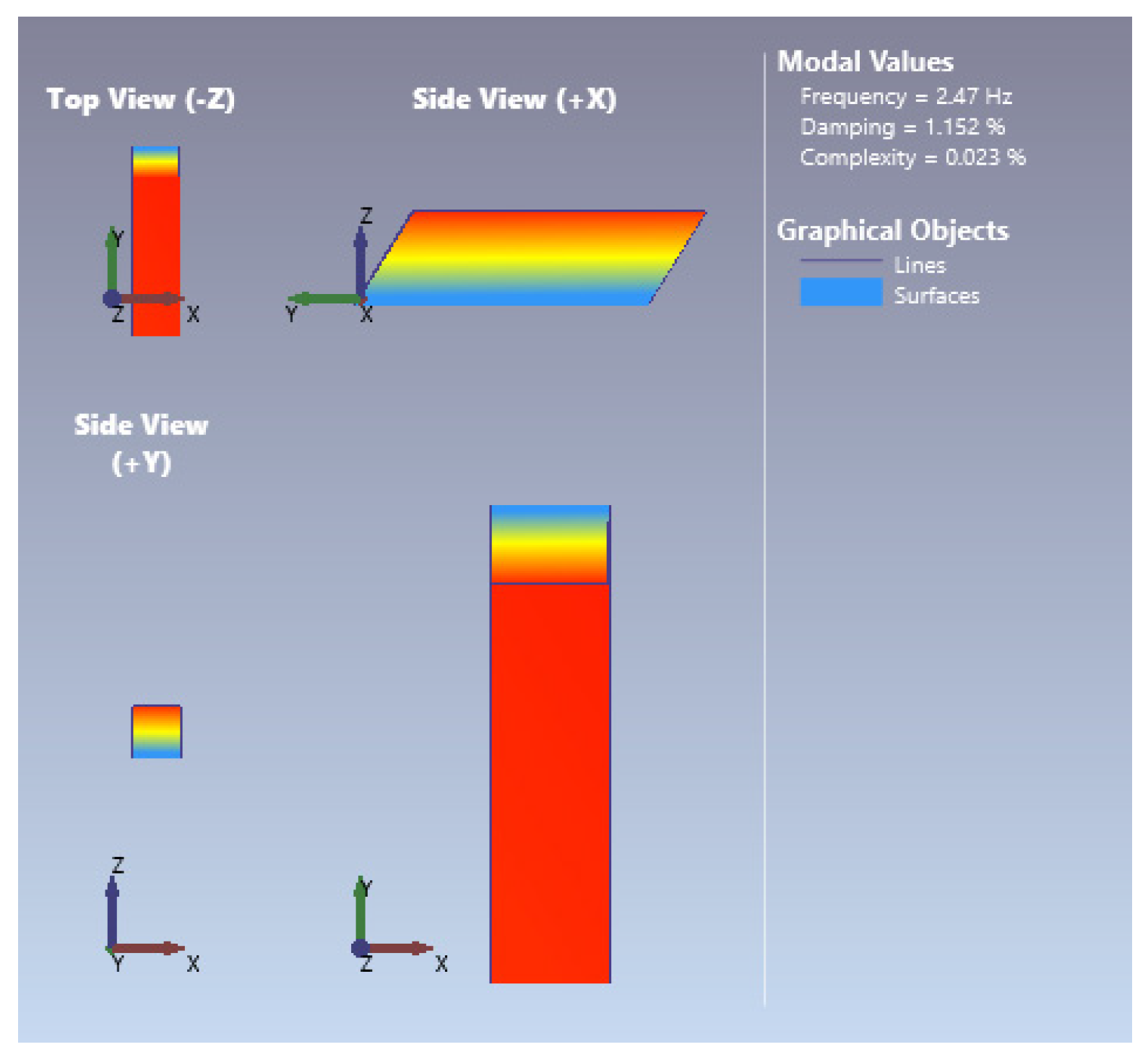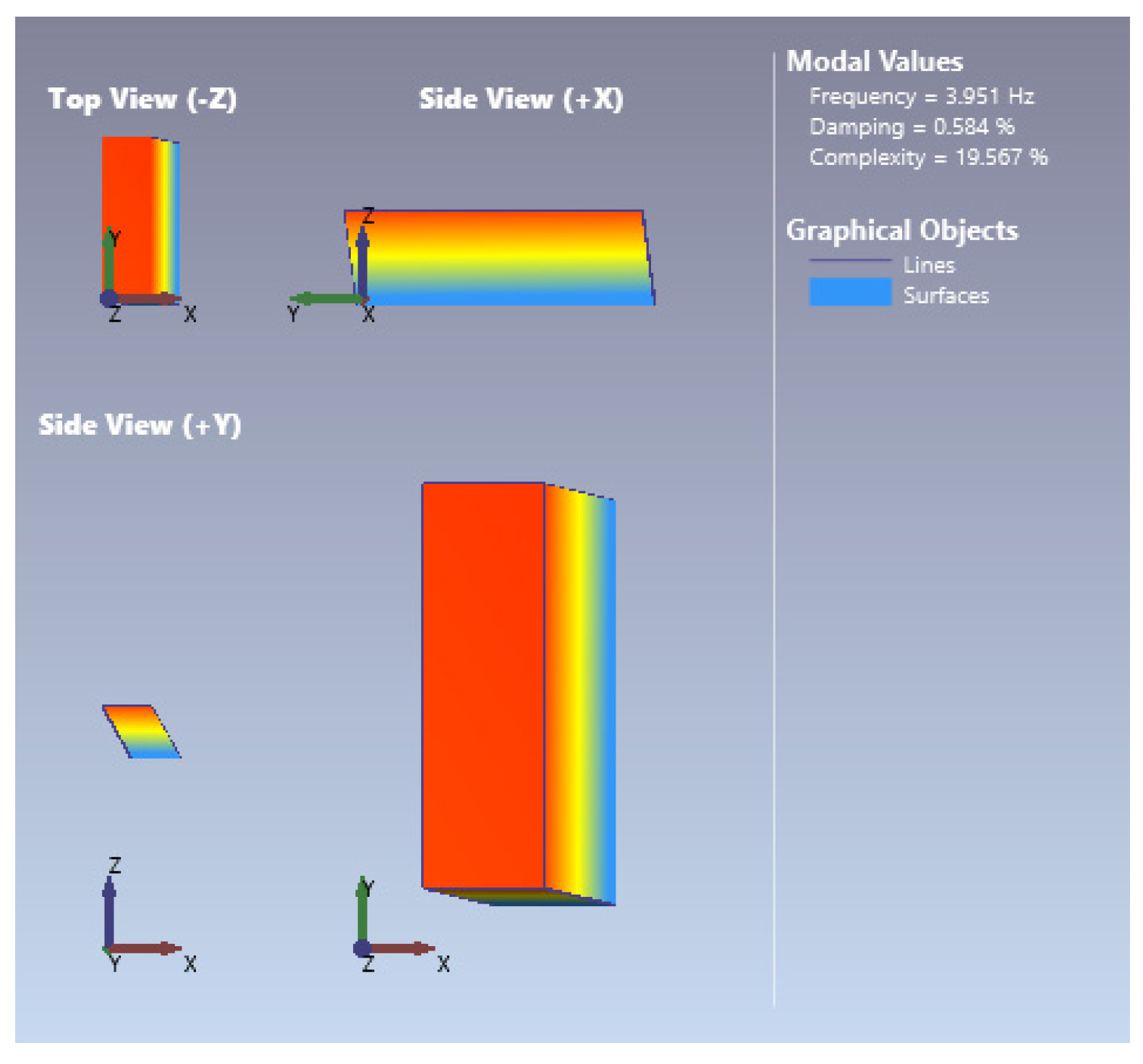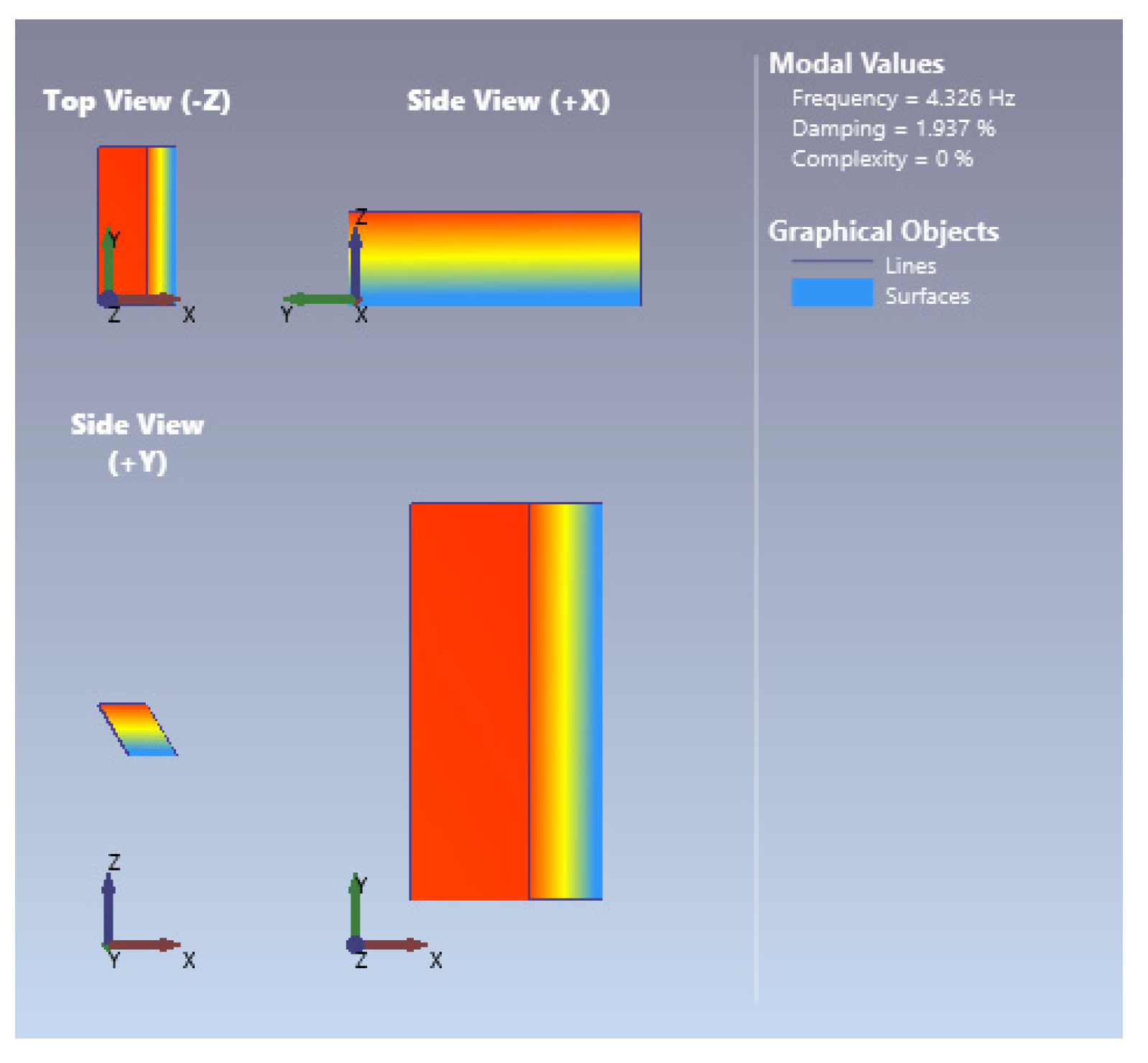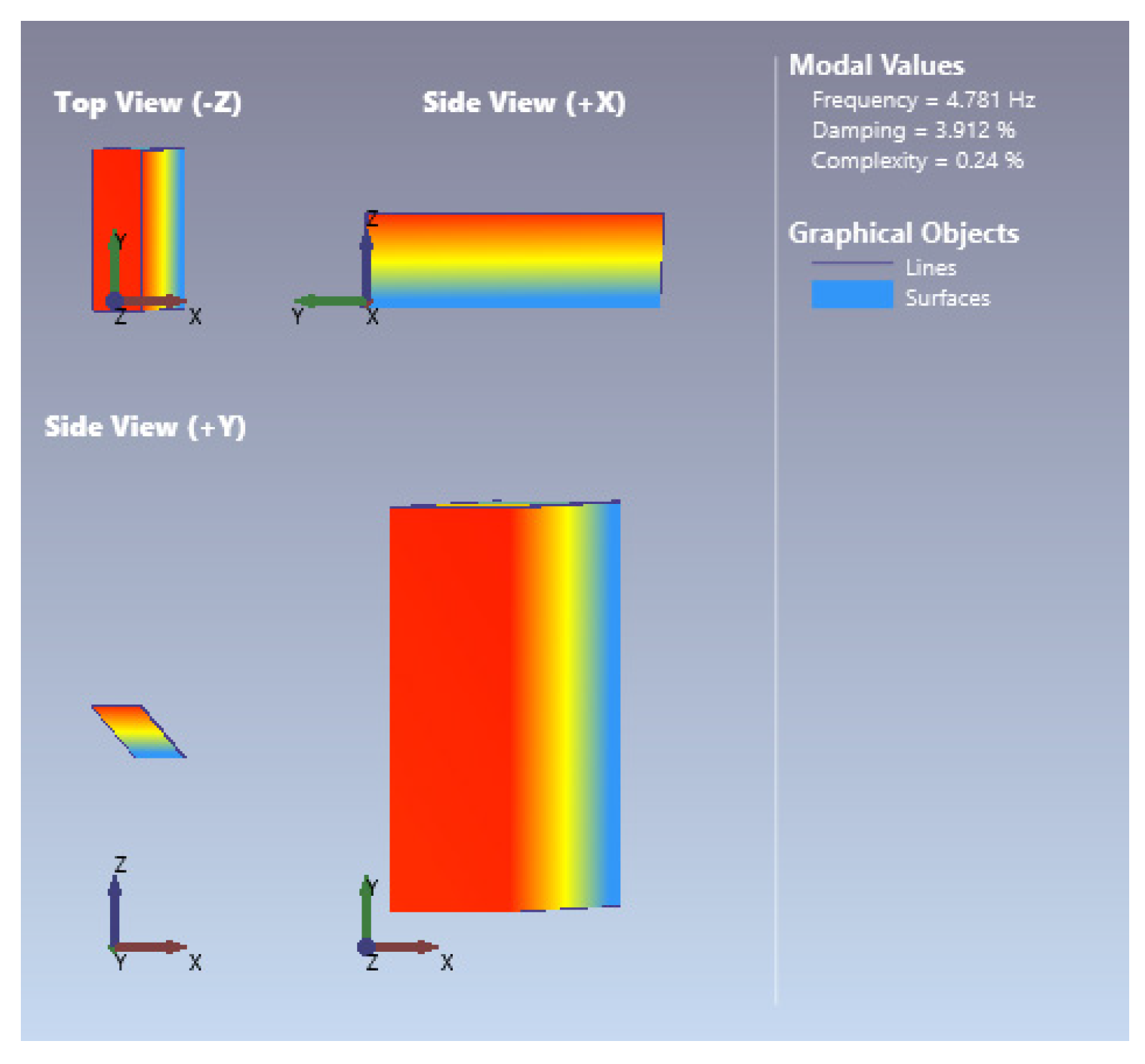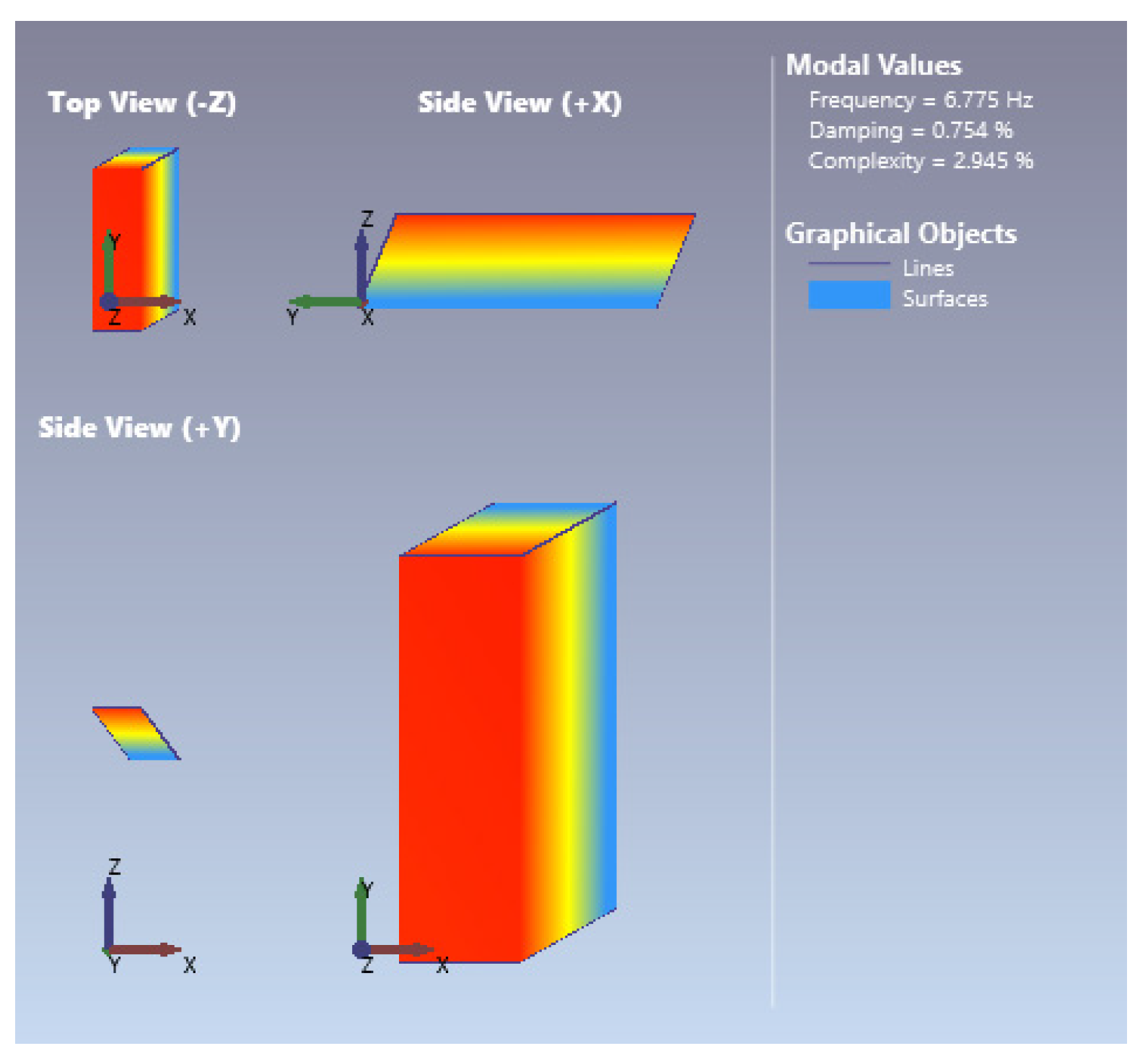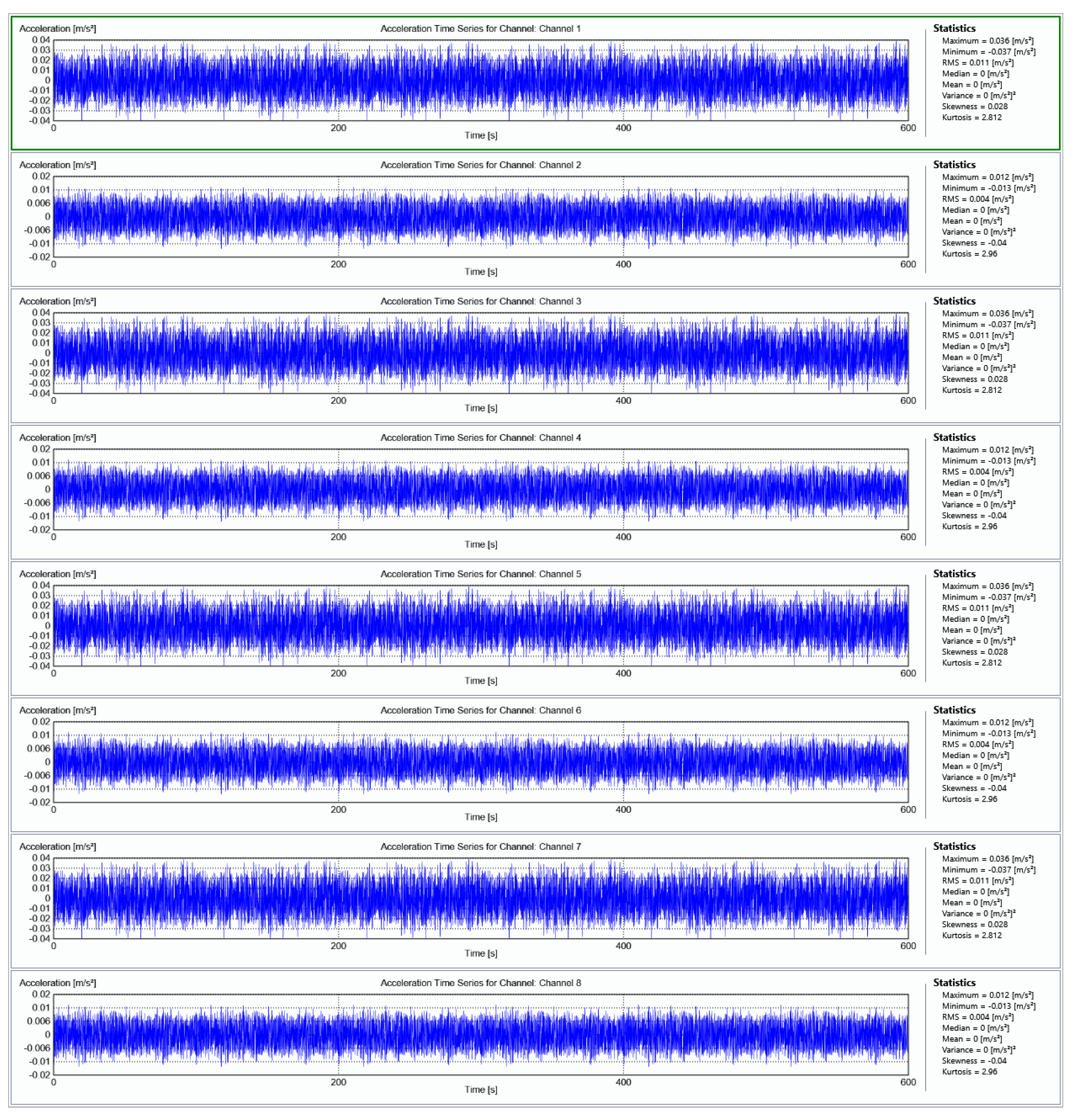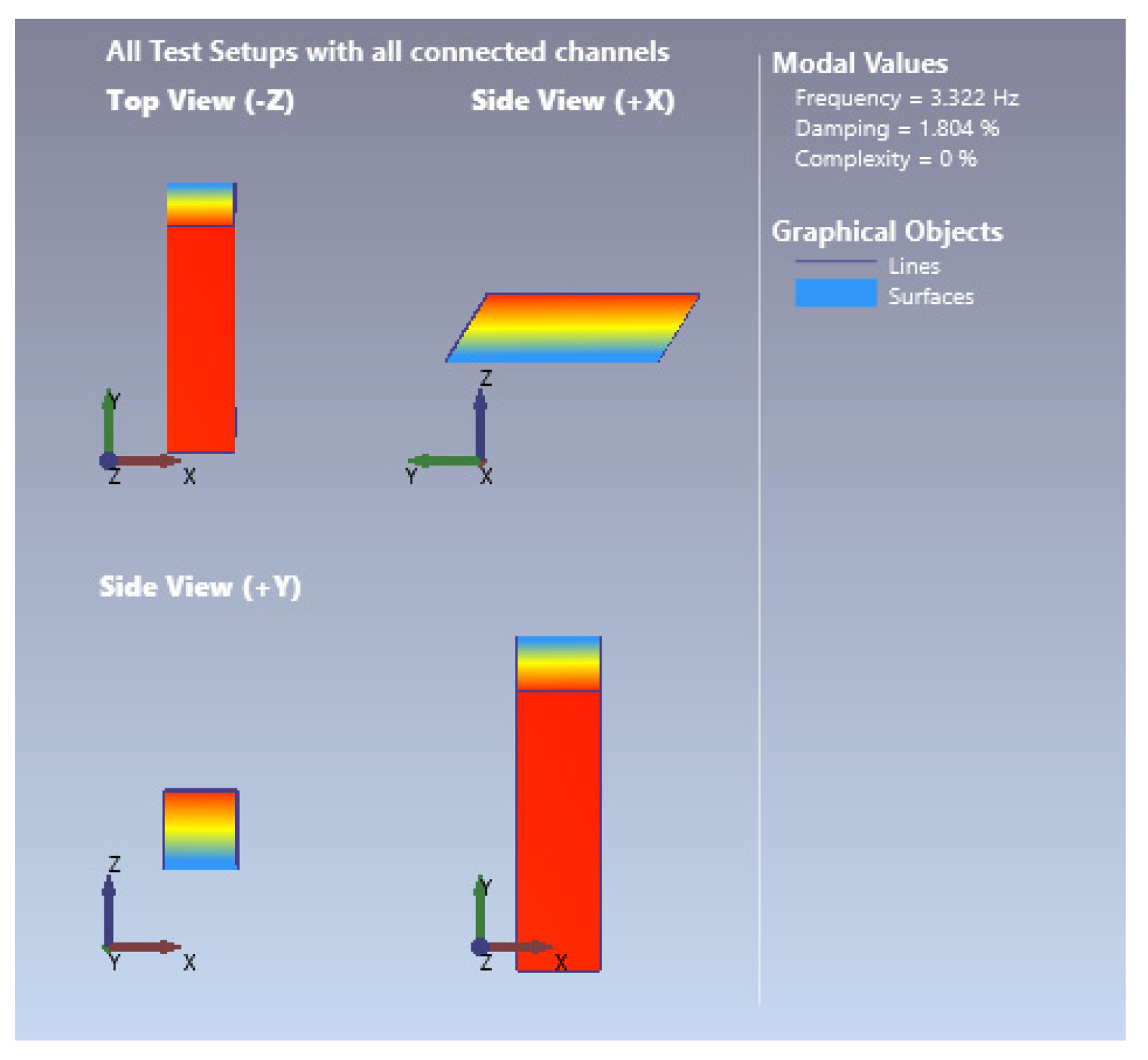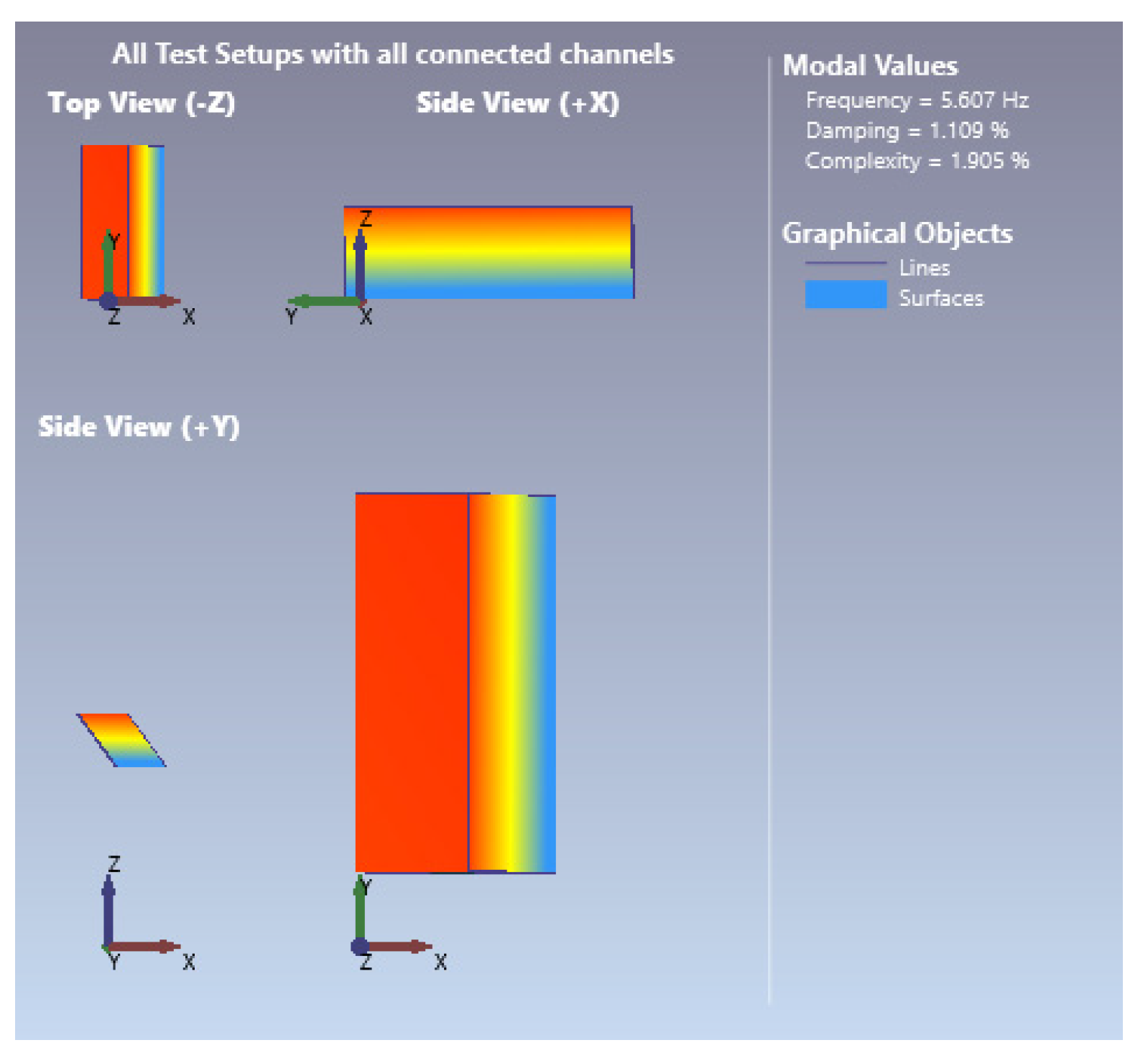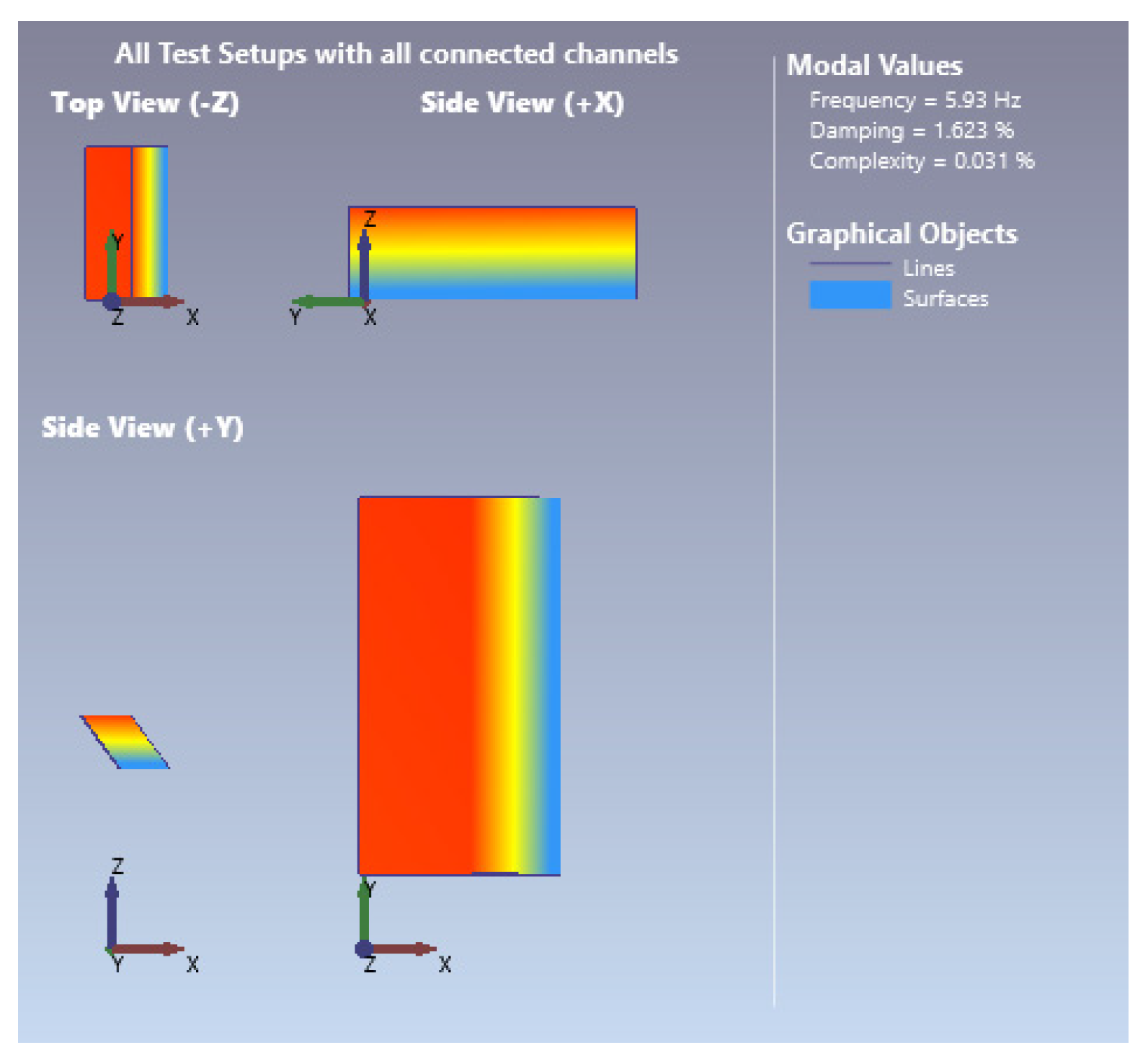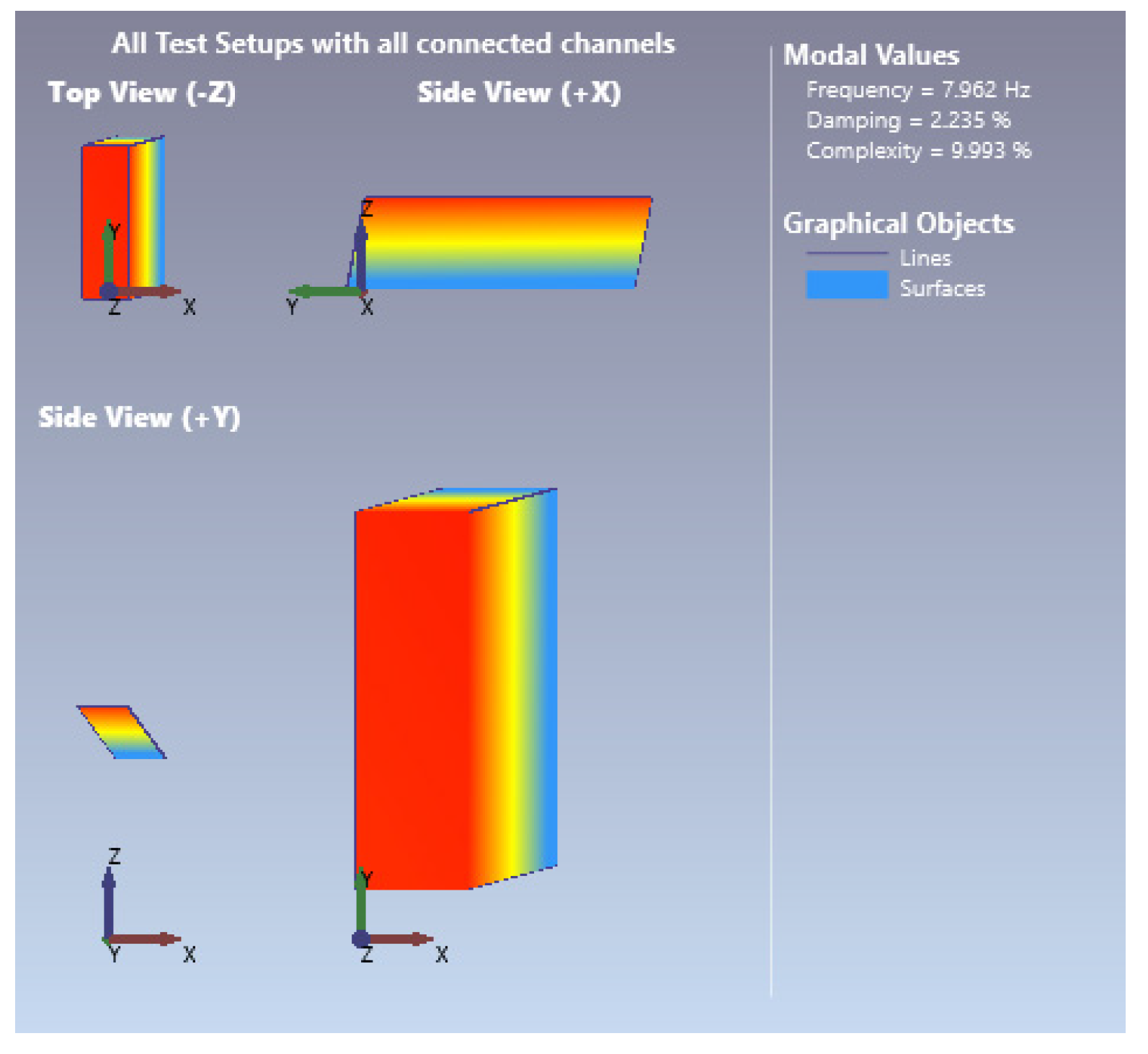1. Introduction
In recent years, developing nanotechnology has significantly increased the mechanical, chemical and environmental performances of materials used in civil engineering [
1]. Especially titanium dioxide (TiO
2) is widely used in innovative building materials due to its properties, such as photocatalytic activity, self-cleaning ability, air purification and increased durability [
2]. While traditional concrete and cement-based building materials are negatively affected by external factors such as air pollution, UV rays and abrasion, nano-TiO
2-added materials both increase the mechanical strength and enable the construction of sustainable structures [
3]. Studies show that TiO
2 increases the compressive strength of concrete, reduces crack formation and provides long-term durability [
4]. In addition, TiO
2 has been found to promote environmental sustainability by decomposing air pollutants (NOx, SOx, VOC) [
5]. Furthermore, thanks to self-cleaning concrete and exterior coatings, maintenance costs are reduced and building life is extended [
6].
Light steel is a widely used material in construction, automotive, aerospace and industrial applications, offering great advantages due to its high strength and workability [
7]. However, when exposed to environmental factors, it encounters problems such as corrosion, wear and surface oxidation [
8]. Therefore, advanced coating solutions are of great importance for making light steel long-lasting and durable. Titanium dioxide (TiO
2) coatings offer innovative solutions for light steel surfaces due to their high hardness, photocatalytic properties and chemical resistance [
9]. One of the most important advantages of TiO
2 coatings is that they provide high corrosion resistance. When applied to a steel surface, it reduces the contact of the steel with air and moisture by creating a barrier against oxidation [
10]. In addition, the photocatalytic activity of TiO
2 decomposes organic pollutants and rust layers, ensuring that the surface remains clean and durable [
11]. In addition, TiO
2 coatings increase mechanical strength by increasing wear resistance on mild steel surfaces. Studies have shown that nano-TiO
2-reinforced coatings significantly increase surface hardness and wear resistance [
12]. In addition, the hydrophobic properties of TiO
2-coated mild steel surfaces prevent water and other liquids from adhering to the surface, increasing the environmental resistance of the material [
13]. Lightweight steel structures have a wide range of applications in modern civil engineering, and are widely preferred in residential, commercial and industrial buildings due to their high strength to weight ratio, fast installation time and sustainability advantages [
14]. However, the dynamic behavior of light steel structures is significantly different from traditional reinforced concrete and steel structural systems, and these differences should be examined under earthquake, wind and vibration loads [
15]. Dynamic parameters include the characteristics of a structure, such as natural frequencies, mode shapes, damping ratios and vibration amplitudes [
16,
17,
18,
19]. The low mass density and thin-walled elements of light steel systems cause them to have low natural frequencies and high mode shapes [
20]. This situation requires a detailed engineering analysis in terms of wind-induced vibrations, seismic loads and human-induced dynamic effects [
21]. In recent years, studies have investigated the behavior of lightweight steel structures under earthquake loads and examined the nonlinear effects of mode shapes and damping ratios [
22]. In particular, the buckling and fatigue strengths of structural elements produced from cold-formed steel profiles are of critical importance in terms of dynamic stability [
23]. The finite element method (FEM) and vibration tests are widely used in the dynamic analysis of lightweight steel structures [
24]. These methods are applied to more accurately estimate structural damping capacity, vibration amplitudes and behavior under different loading scenarios [
25].
Operational modal analysis (OMA) is an important technique used in the process of experimental investigation and modeling of structural dynamics [
26,
27]. It has great importance in determining the vibration modes and frequencies of structures, especially in engineering fields. OMA is an approach to the description of dynamic systems, usually supported by measurement techniques such as structural monitoring, vibration testing and frequency response function. In recent years, this analysis technique has been developed to overcome the limitations of traditional modal analysis methods and has been applied to a much wider application area [
28,
29,
30]. While operational modal analysis involves experimental studies by observing the natural vibrations of the structure, using only the vibrations due to environmental conditions without applying an external stimulus (e.g., a shock or vibration source) makes this technique particularly advantageous [
31,
32,
33]. This feature of OMA offers a much less invasive approach compared to traditional modal analyses, thus allowing it to be easily used in various application areas, especially in industrial structures. Non-destructive structure property determination methods have been developed in recent years, and many experimental studies have been conducted in many different countries of the world in this field [
34,
35].
The Stochastic Subspace Identification-Unweighted Principal Component (SSI-UPC) method aims to increase the accuracy rate by reducing the computational load compared to the traditional covariance-driven (COV-SSI) and data-driven (DATA-SSI) methods [
36]. One of the main reasons for this is the reduction of unnecessary noise and errors by applying unweighted principal component analysis (PCA) [
37]. SSI-UPC allows the automatic and reliable determination of modal parameters [
38]. Traditional SSI methods are sensitive to external noise. SSI-UPC provides more reliable results thanks to the noise filtering mechanisms [
39]. The compression of Hankel matrices and the optimization of singular value decomposition (SVD) make it easier to work with large data sets by reducing processing time [
40]. SSI-UPC is widely used to determine the natural frequencies, damping ratios and mode shapes of large-scale engineering structures [
41]. The SSI-UPC method is increasingly adopted for structural health monitoring and performance evaluation of large-scale structures in the field of engineering. It is considered an ideal method, especially for remote sensing and big data-based analysis [
42]. Also, [
43,
44,
45] new studies on operational modal analysis (OMA) were used.
The aim of this study is to reveal the effects of nano-TiO2 coating application on the dynamic parameters of the container house model manufactured from light steel by using an innovative and non-destructive method, operational modal analysis. Thus, it will be seen how well nano-TiO2 coatings can meet the rigidity and reinforcement demands of light steel container houses.
3. Results
3.1. Operational Modal Analysis Model of Light Steel Container House
Measurements were made at approximately 14 degrees Celsius and 57% humidity. Similar measurements were repeated to increase the data set security and for optimal purposes. Data sets that had unwanted noise (corrupt data) were discarded. During the measurement, the measurement time trigger command was used, and the light steel container house was stopped 250 m away at the time of the measurement. Among the repeated measurements, consistent data sets were taken as the basis many times. The measurement step was selected as 200 Hz based on previous studies. In calculating the measurement period, the “Introduction to Operational Modal Analysis” book [
51] was taken into account. The measurement time relation taken from the Introduction to Operational Modal Analysis book is given in Equation (17).
Here,
represents the minimum measurement period, and
represents the theoretical damping ratio of the structure type. In this study, the damping ratio for steel structures was taken as 0.02. According to Equation (17), the minimum measurement period was found to be 500 s. In order to make the measurements more reliable, the measurement period was taken as 600 s. The placement of channel numbers is given in
Figure 6. The accelerations obtained from each channel for data processing as a result of the measurement are given in
Figure 7. Odd-numbered channels represent the X-direction, and even-numbered channels represent the Y-direction.
The data were processed in Artemis Modal Pro software. Detrending and filtering processes were performed. Lowpass was selected as the filtering method in the collection and processing of data. The SSI-UPC (Stochastic Subspace Identification-Unweighted Principal Component) method, which is a time domain method, was used to obtain the parameters. The spectral density matrices are given in
Figure 8.
The modal analysis results for the first five modes of the light steel container house model obtained using operational modal analysis are given in
Table 3.
3.2. Operational Modal Analysis Model of Light Steel Container House with Coating TiO2
The entire outer surface of the light steel container house model is coated with titanium dioxide (TiO
2) using the cold spray method. The surface is expected to dry during each application. Approximately 1 h of curing is required in order to prepare a surface for application of titanium dioxide. After these setups, operational modal analysis tests are followed by curing to obtain the experimental dynamic characteristics, similar to previously used properties in order to obtain comparative measurements. A titanium dioxide layer was applied in a single layer. After curing, measurements were made every 50 cm
2 of the model with a paint measuring device. The measurement results ranged between 100 and 120 microns [
52]. While 1 h is sufficient for curing, measurements were taken after 3 h to ensure the reliability of the operational modal analysis results. The locations of the accelerometers were determined before the coating was applied, and data were taken from the same point. Measurements were made at approximately 13 degrees Celsius and 56% humidity. The measurement time is unchanged, and is 600 s. The accelerations obtained from each channel for data processing as a result of the measurement are given in
Figure 14.
The data were processed in Artemis Modal Pro software. Detrending and filtering processes were performed. Lowpass was selected as the filtering method in the collection and processing of the data. The SSI-UPC (Stochastic Subspace Identification-Unweighted Principal Component) method, which is a time domain method, was used to obtain the parameters. The spectral density matrices are given in
Figure 15.
The mode shapes of the first five modes of the house TiO
2-coated model of the light steel container, which were obtained using operational modal analysis, are given in
Figure 16,
Figure 17,
Figure 18,
Figure 19 and
Figure 20, respectively.
The modal analysis results for the first five modes of the TiO
2-coated model of the light steel container house, obtained using operational modal analysis, are given in
Table 4.
3.3. Comparison Results
The comparison of the frequency values of the first five modes obtained using operational modal analysis for both models (non-coated and coated) is given in
Table 5.
The comparison of the mode shapes of the first five modes obtained using operational modal analysis for both models (non-coated and coating) is given in
Table 6.
The comparison of the damping ratio of the first 5 modes obtained by operational modal analysis for both models (non-coated and coated) is given in
Table 7.
All experimental measurements were made under identical conditions as specified for both models. Thus, the aim was to minimize the error margins in the comparison data obtained and to ensure the reliability of the results. In addition, when the results obtained are examined, it is seen that they are in line with the literature and theoretical expectations.
When the acceleration values from all channels were compared, it was observed that the accelerations in the X-direction decreased by approximately 60%, and the accelerations in the Y-direction decreased by approximately 86% with the TiO2 coating.
When the natural frequencies for Mode 1 were examined, an increase of 34.49% was observed in the model in which the light steel container house was coated with TiO2. This observed increase also shows the increase in rigidity. When the Mode 1 shapes were compared, no change was observed. When the damping ratios in Mode 1 were compared, an increase of 56.60% was observed. These changes in Mode 1 show that the TiO2 coating increases the safety of the structure.
When the natural frequencies for Mode 2 were examined, an increase of 41.91% was observed in the model in which the light steel container house was coated with TiO2. This observed increase also shows an increase in rigidity. When the Mode 2 shapes were compared, no change was observed. When the damping ratios in Mode 2 were compared, an increase of 89.90% was observed. These changes in Mode 2 show that the TiO2 coating increases the safety of the structure.
When the natural frequencies for Mode 3 were examined, an increase of 37.08% was observed in the model in which the light steel container house was coated with TiO2. This observed increase also shows an increase in rigidity. When the Mode 3 shapes were compared, no change was observed. When the damping ratios in Mode 3 were compared, a decrease of 16.21% was observed. Although there was a decrease in the damping ratio, there was also a higher percentage increase in the frequency ratio. Therefore, these changes in the third mode show that the TiO2 coating positively affects structural safety.
When the natural frequencies for Mode 4 were examined, an increase of 31.06% was observed in the model in which the light steel container house was coated with TiO2. This observed increase also shows an increase in rigidity. When the Mode 4 shapes were compared, no change was observed. When the damping ratios in Mode 4 were compared, a decrease of 49.57% was observed. Although there was a significant increase in stiffness due to an increase in frequency, a significant decrease in the damping ratio was observed proportionally. However, a ratio close to the 2% damping ratio predicted for steel was obtained based on the damping value. Therefore, it can be said that the TiO2 coating gave positive results in terms of structural safety in the fourth mode.
When the natural frequencies for Mode 5 were examined, an increase of 17.52% was observed in the model in which the light steel container house was coated with TiO2. This observed increase also shows an increase in rigidity. When the Mode 5 shapes were compared, no change was observed. When the damping ratios in Mode 5 were compared, an increase of 196.42% was observed. These changes in Mode 5 show that the TiO2 coating increases the safety of the structure.

